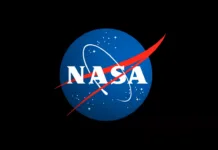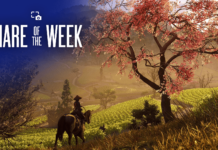Hubble Space Telescope Unveils a Cosmic Canvas in Hydra
The Hubble Space Telescope, a collaborative effort between NASA and ESA, continues to unravel the mysteries of the universe with its remarkable observations. One of its recent images captures an intriguing section of the sky in the constellation Hydra, showcasing an incredible range of celestial bodies, from stars within our own Milky Way galaxy to distant galaxies scattered across the cosmos.
This image serves as a breathtaking testament to the vastness of the universe. The stars and galaxies depicted span a mind-bending range of distances, offering a glimpse into the immense scales of space and time. The nearest objects in this cosmic tableau are stars belonging to the Milky Way. These stars are easily identifiable by their distinctive diffraction spikes, which appear as lines radiating from bright light sources. These spikes result from the interaction of starlight with the secondary mirror supports of the Hubble Space Telescope.
A particularly bright star, located just at the edge of a prominent bluish galaxy in the image, is a mere 3,230 light-years away from us. This distance has been precisely measured by ESA’s Gaia space observatory, a mission dedicated to mapping the positions and movements of stars with unprecedented accuracy. Gaia’s data has been instrumental in enhancing our understanding of the Milky Way’s structure and dynamics.
Understanding Light-Years and Distance in Astronomy
To fully appreciate the scale of the universe as depicted in this image, it’s essential to understand the concept of a light-year. A light-year is the distance that light travels in one year, which is approximately 5.88 trillion miles (9.46 trillion kilometers). When astronomers refer to an object being thousands or even millions of light-years away, they are describing the vast stretches of space that separate these celestial bodies from Earth.
The notion of light-years also highlights the time it takes for light to travel from these distant objects to us. For example, when we observe a star that is 3,230 light-years away, we are actually seeing it as it was 3,230 years ago. This ability to look back in time allows astronomers to study the history and evolution of the universe.
The Role of Hubble in Modern Astronomy
Since its launch in 1990, the Hubble Space Telescope has been a cornerstone of modern astronomy. Its observations have led to groundbreaking discoveries, from the confirmation of the accelerating expansion of the universe to the detailed study of exoplanets and their atmospheres.
One of Hubble’s key strengths is its ability to capture images in various wavelengths of light, including visible, ultraviolet, and near-infrared. This versatility allows scientists to explore different aspects of astronomical phenomena and gain a more comprehensive understanding of the universe.
Moreover, Hubble’s location above Earth’s atmosphere enables it to obtain clearer and more detailed images than ground-based telescopes. The atmosphere can distort and absorb light, making it challenging for terrestrial observatories to achieve the same level of clarity.
The Gaia Mission: Mapping the Milky Way
The Gaia space observatory, launched by ESA in 2013, complements Hubble’s work by focusing on our own galaxy, the Milky Way. Gaia’s primary mission is to create a three-dimensional map of the Milky Way by measuring the positions, distances, and motions of over a billion stars.
This ambitious project has already transformed our understanding of the Milky Way’s structure. By providing precise data on star positions and movements, Gaia helps astronomers study the galaxy’s formation, evolution, and dynamics. The mission also contributes to the search for nearby exoplanets and the identification of potentially hazardous asteroids.
The Importance of International Collaboration in Space Exploration
The Hubble Space Telescope and Gaia observatory exemplify the power of international collaboration in advancing our knowledge of the universe. By pooling resources and expertise, NASA and ESA have been able to achieve scientific milestones that would be challenging for any single agency to accomplish alone.
These collaborations extend beyond Hubble and Gaia, encompassing a wide range of missions that explore our solar system and beyond. The synergy between agencies like NASA and ESA ensures that humanity continues to push the boundaries of space exploration and deepen our understanding of the cosmos.
Good to Know: The Future of Space Telescopes
While Hubble has been a workhorse of astronomical discovery for over three decades, the future holds even more promise with the upcoming launch of the James Webb Space Telescope (JWST). Scheduled for deployment in the near future, JWST is designed to build on Hubble’s legacy by observing the universe in the infrared spectrum.
JWST’s advanced capabilities will allow astronomers to peer even further back in time, studying the formation of the first galaxies and stars. Its powerful instruments will also enhance our understanding of exoplanets, potentially identifying signs of life in distant solar systems.
In conclusion, the Hubble Space Telescope’s image of the Hydra constellation is a stunning reminder of the universe’s vastness and complexity. Through the combined efforts of Hubble and Gaia, astronomers are piecing together a more complete picture of our galaxy and the cosmos beyond. As we continue to explore the universe, the spirit of international collaboration and the development of cutting-edge technology will remain key to unlocking the secrets of the stars.
For more Information, Refer to this article.


































![Samsung’s Breakthrough Fuels Progress in Science and Industry: Interview How Samsung’s Engineering Feat Became a Catalyst for Scientific and Industry Advancement [Interview on Real Quantum Dots Part 2.]](https://www.hawkdive.com/media/samsung-tvs-and-displays-samsung-quantum-dots-technology-qled-tvs-quantum-dots-experts-interview-par-218x150.jpeg)